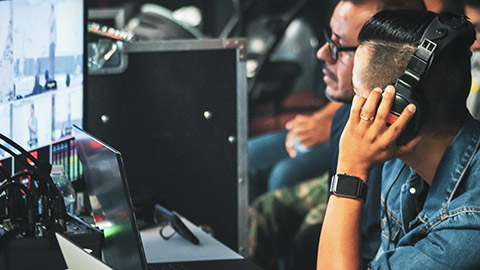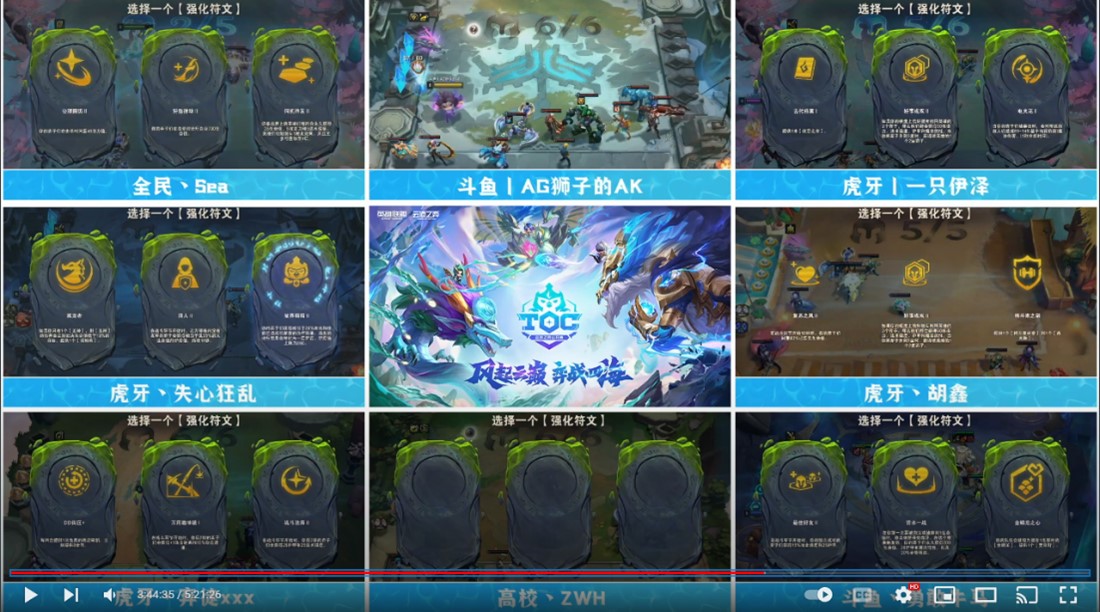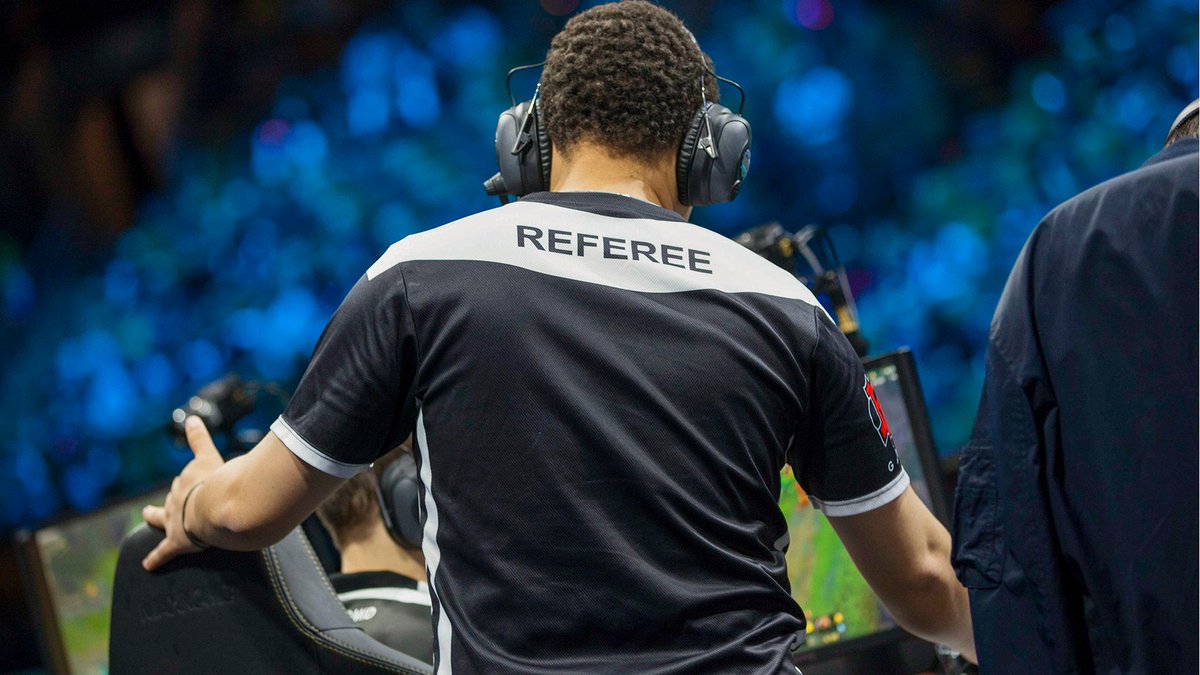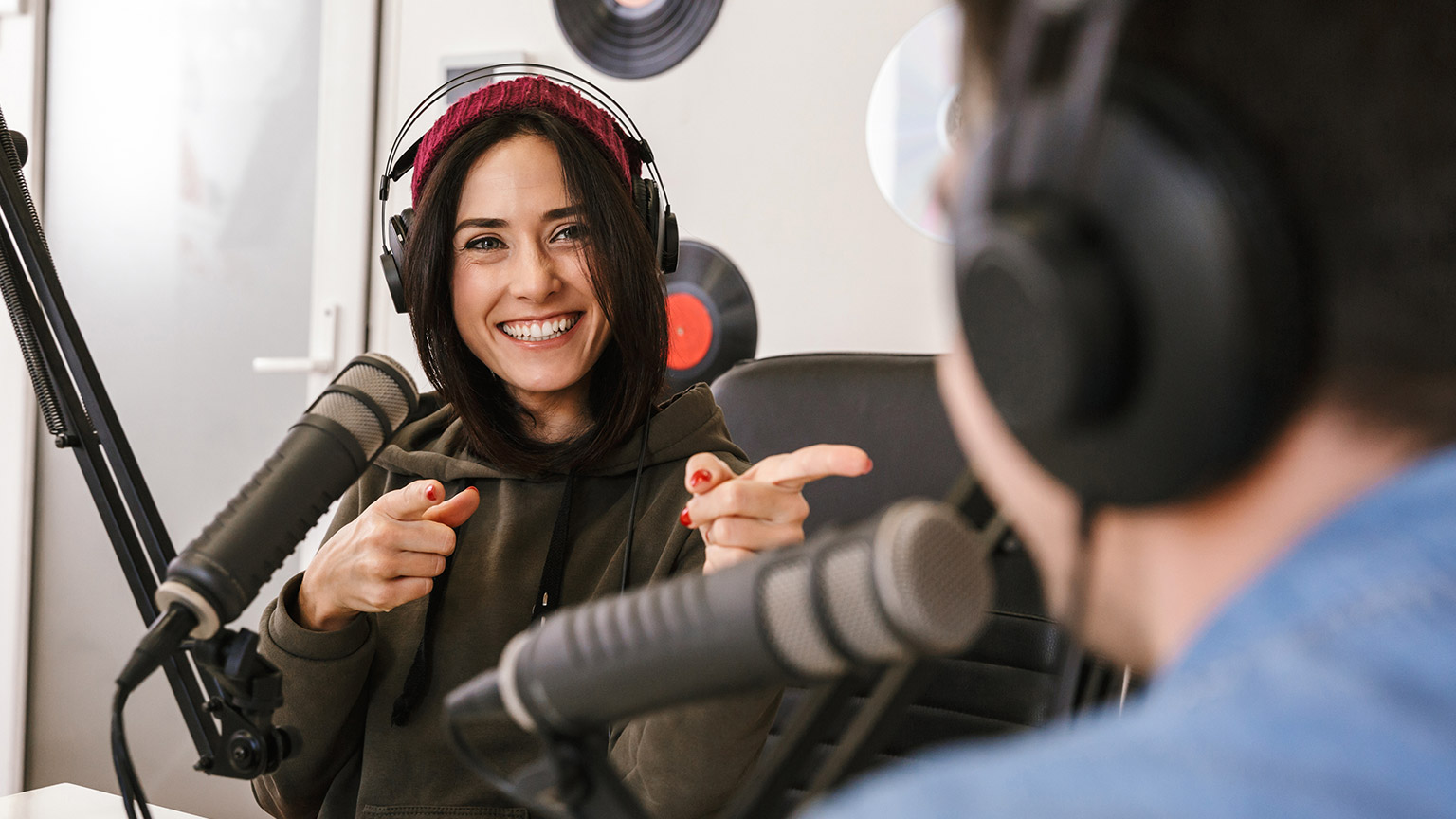What we are calling the ‘Back-end of eSports’ describes people working as part of the show that do not interact with the crowd. They only interact with players and staff members.
The following infographic illustrates the roles of those who work in the back end of eSports.

Sometimes it is the quiet observer who sees the mostKathryn L. Nelson
We need eyes on the field. People with precision that can follow the action and facilitate the casters and the crowds experience inside of a game. Observers have good game knowledge depth, they are guardians of the action, so they need to be ready at all moments during a match.
The role of the observer
Observers are the eyes for an audience of often hundreds or thousands of viewers for an eSports match. They control the in-game cameras that show all the player action. They identify the key plays, make sure the camera is broadcasting the most exciting parts of the match and pick replays for the highlight reels.
They work together with the production team, working closely with shoutcasters and the broadcast crew. They are responsible for switching from interesting camera angles and player perspectives to create a cohesive and engaging viewing experience, and when done well, you wouldn’t even notice they exist.
Case Study
Watch: How Missing s1mple's Greatest Play Turned a CS: GO Observer into a Meme (18:45 minutes)
This video demonstrated how important the role of the observer is for the audience during broadcasting events. How demanding the role could be during an important event. If you miss a clutch play made by the players, you will not be forgiven easily.
Types of observers
There are different types of in-game observers depending on the genre of game.
For First Person Shooter (FPS) titles there are POV (main) observers who focus only on swapping perspectives in the first person. There are also the cinematic (secondary) observers who are more focussed on wide angle shots, creative shots or moments the POV observer may have missed. For Multiplayer Online Battle Arena (MOBA) titles you can also have a replay observer who collects parts for analysis and replays.
The following video provides you with an overview of what is required for an observer.
Watch: What is Observing? The Unsung Heroes of Esports Broadcasting (12:13 minutes)
To your average outsider, eSports can be intimidating to watch. But even if you can wrap your head around the onscreen nonsense, none of that matters if you’re not given a chance actually to see it. As annoying as a misplaced camera, or a poorly timed cut away can be – it’s more than likely that your nerd rage is going to be directed at one target in particular: the observer.
Observer qualities
The are no strict qualifications to becoming an in-game observer but probably the most important attribute to have would be knowing a game inside out to the point where you can predict what will happen next.
PimpmuckL and Weppas, 2 observers that bring you closer to your passion. Learn how they make the Dota2 pro scene enjoyable and exciting for the audience.
Watch: A New Perspective | SAP Esports (17:38 minutes)
Understanding the technology

Having strong technical skills is a must in any eSports role, particularly in the observer, where a lack of skills is glaringly obvious to everyone watching the game.
Joseph Harding, an experienced eSports observer spoke to British Esports about a few technical skills to be aware of. Some of these skills include:
- “Every genre has its own points/tools,” Joseph says. “For example, League of Legends has a program called League Director for 3D pre-planned camera movements.
- There can be a few unspoken rules too such as only using the teamfight UI (user interface) for replays.
- “Also, the game has a lot of undocumented info, like code you can add to the config files to add better timers and so on. There are shortcuts too, like pressing Ctrl + Shift + Z to let you zoom out further.
- The observers usually also vision mix, where they have buttons for picture in picture and to go to replays, or a base race, for example.
So how is it done?
Watch the following video for some behind-the-scenes footage of observers in action.
Watch: ELEAGUE Behind the Scenes – An ideal Observer’s work station (6.03 minutes)
This video was brought by an eLeague staff member, and it shows the observer's perspective inside an eSports event. It tells us how every production room is different and how set-ups can help observers during competitions.
Becoming an observer
Whether you're working on broadcasts or tournaments that reach five people or 500, the experience you gain is the same. Any experience you can get helps so start at grassroots level, volunteer, run your own events and get amongst the community. Networking is key to getting your foot in the door.
- Layer your learning. Learn the key bindings and the mouse control. Then add new features as and when you’re comfortable with the previous.
- Listen to your casters, if they’re talking about something, make sure it’s on display.
- Only once you have the fundamentals, begin to have fun with it. You’ll be surprised what some zooms or some tracking can do for entertainment.
Thinking about Observers from a macro perspective
Let’s unpack the role of the observer. We need to think about their role as a whole - not just about what technical skills it entails.
Case study
Being an observer in Riots game Teamfight Tactics (TFT).
In a broadcasted tournament, Riot have observers that will watch and take note of the game. They will usually be working together in small groups (2-3) but sometimes will be in groups as big as 10 for the largest events. Tournaments are held on a tournament realm where basically as many observers can join as needed. At certain times throughout the game players are given a choice of 3 ‘augments’, this is a key part of the game and observers need to go through and give the POV of as many players as possible to see what they have chosen as it often will heavily influence the way they play out the rest of the game. As TFT eSports continues to grow, so have the observers and the production value as we have seen new additions to the broadcast given to us such as showing augment choices by players at once in an 8-way split screen or showing two sides of a fight from both players’ perspective. This shows that as a game grows, observers will grow with it in order to make it as appealing as possible for viewers.
Here is a simple comparison from set 6 to set 7.


Following the story of the game
In TFT it is likely that different players will ‘roll down’ at different times and often this can be predicted by the observers. Knowing whose story to follow is important as it will help the viewers follow what is happening in the game so by the end of it, viewers can understand how each player got each placement and what might have gone wrong for them. This is important for observers to be able to do in almost any game as this way viewers can catch all the action and not miss anything. Think of how this is applicable in your game of choice and give an example of how the observers could improve in this area.

It's because even a good man can't always be right, that we need... rulesJohn Irving
Partial ruling is a threat for competitive eSports, we need trained impartial people that know how to quickly address problems working under pressure and under the clock.
The following video introduces you to an eSports Referee.
Watch: Meet the Referee (3.42 minutes)
We followed our referee Graham around Intel Extreme Shenzhen to get a behind the scenes look at the event and what he does that you may not see.
Game or tournament administrators are in a sense the referees of the esports world. They play a major behind the scenes role in ensuring a tournament has integrity and runs smoothly.
The role of the Administrator/ Referee
Just like traditional sports referees, eSports game administrators make sure the players are sticking to the rules. They have a wide understanding of the game and make decisions that keep the tournament a fair playing field.
The varied responsibilities of an eSports administrator include the following:
- Pre event tasks - set up equipment at a tournament
- Watch teams/players during a live event making sure each player is sticking to the rules.
- Are the direct contact for teams if they have issues.
- Make sure everything runs on schedule.
- Deals with in game or on-stage technical issues.
- Hand out penalties.
- Record scores.
- Dispute resolution.
- Understand and organising tournament structure.
The following infographic illustrates the Game Admin line of Command.
- Players: stop the match and report issue
- Captain: if it's in-game settings fixes issues, if it's an external issue reported to referee, he's the only one talking to the referee
- Referee: stops the match at will for solving issues. If it cannot be solved, it is reported to the game administrator
- Game Administrator: Needs to rule out decisions which can unpause the match, restart the match, cronoback the match or disqualify a team
Using team viewer
The following video provides a quick summary of how to download and use TeamViewer as a remote tool for the online space.
Watch: How to use TeamViewer (Remote control for PC or Mac) (10.36 minutes)
PORTFOLIO CHECKPOINT 3H: Game Admin: “The invisible hand helper”
Identify five problems that are hardware related during eSports competitions.
- Problem: How to fix:
- Problem How to fix:
- Problem How to fix
- Problem How to fix
- Problem: How to fix:
Identify five problems that are software related during eSports competitions
- Problem: How to fix:
- Problem How to fix:
- Problem How to fix
- Problem How to fix
- Problem: How to fix:
Now choose one problem from hardware and software to demonstrate the fix. Using TeamViewer and OBS as your recording device, simulate the aid of a person that is experiencing these problems remotely.
Make sure to record your session and paste the link in your Portfolio.
Link for the TeamViewer recorded Intervention:

News is something someone wants suppressed. Everything else is just advertisingLord Northcliff
Storylines are a huge part of eSports. The journalist's role is essentially to gather information and create content regarding storylines that pique the viewer's interest. A huge part of eSports is the offseason and creating teams. Having knowledge of the scene and inside sources is critical to getting the scoop on what big moves are happening in the offseason as it is common for teams to reach out and have their roster moves “leaked" to garner hype for the upcoming season.
The most important skills needed to be an eSports journalist:
Loving eSports – Make sure you know what you are talking about, being able to familiarise yourself with the game or genre you want to follow will allow you to create much better content.
This leads us into...
Being able to tell a story
Making your content fun to read is a hard skill that will likely take time to develop, however just being a huge fan of eSports will already set you along the right path as you will know what content is consumed in the scene.
Proficient writing skills
Whether you are writing articles or creating video content, as a journalist you need to have proficient writing skills that will make your content more digestible. You may be thinking “why do I need good writing skills if I am going to primarily be making video content” and the answer is simple – a lot of the content you create will be written before you do it, and having it make sense and flow nicely is critical.
Networking
As explained above, so much of the content you create will be much easier to create by knowing the people in the scene. Do your best to be present in the industry. By doing this you are garnering relationships that will help enable you to write the best possible content you can.
Objectivity
When being a journalist it is your duty to be as objective as you can. The ability to properly research and be factual with what content you put out is important and pushes your work to the next level. Case study: the Score eSports
An interview made by theScore eSports on former TSM player Beaulo. The child prodigy of Rainbow6 retiring from professional play. The reasons behind his retirement and his future as a content creator.
Watch: Beaulo Has Retired, He Told Us Why...(17.48 minutes)
Challenges and Opportunities in eSports Journalism:
The following video outlines details of the challenges and opportunities in journalism for eSports.
Watch: eSports Journalism: Challenges and Opportunities (35.51 minutes)
In this 2017 GDC talk, Roy Graham, editor of Kill Screen's eSports site The Meta, offers his take on what obstacles await journeyers into this brave new world of esports journalism, and what success in the realm of this field might look like.
Game and Tournament Rules
A game administrator/referee must understand and uphold the rules of the tournament. According to eSports social platform PLANET9, there are two (2) sets of rules in tournaments - “in-game” and “out-game”. In-game rules are set by the game itself. For example, in League of Legends, each team can only have five (5) players and the way to win is to destroy the opposite team’s nexus; while out game rules are set by TOs (Tournament Organisers), it would be something like “using the Swiss format for group stage”, “players are prohibited to conduct match-fixing” etc. Overall, eSports referees are obliged to enforce both sets of rules.
Tournament formats
What is a tournament format? A tournament format, also known as a tournament bracket, is a set of established rules that organises how competitors in a tournament will play against each other and how they would proceed upon winning and losing a match.
There are different tournament formats depending on the genre of the game but typically there are 4 main types of eSport tournament formats. These are:
- Single Elimination
- Double Elimination
- Round Robin
- Swiss.
Tournament Rule Book
Every tournament has a different rulebook but here are some basic principles to follow from PLANET9.gg for your own rule book:
Basic Information
This section should include your tournament’s purpose, scheduled starting and ending date, location, rewards etc.
Application Information
This section should tell people where and how to sign up/qualify for the tournament. Don’t forget to mention mandatory fees (such as guarantee deposit) in case people don’t show up and waste a spot and your time.
Tournament System
Decide what formats you’re using for each stage of the tournament and how the tournament proceeds. Let players know how to check in/out the match and whether they’ll need to report the results, or you will do it.
Issue processing methods
Establish an SOP (Standard Operating Procedure) for how issues will be dealt with. For instance, how to pause the match? What qualifies a pause? How many pauses per type do participants have? And so on. Then who judges the situation and what happens next.
Consequences
Lastly, what are the punishments? To ensure players/teams know their rights, you should brief them on how to report or appeal as well.
Prohibited Behaviours
There needs to be clear and specific guidelines on prohibited behaviour in this section. This is to minimise the chance of any loopholes appearing. List what software is allowed to run before/in/post game on each player’s device and ban any that are not. Also, state what behaviours are forbidden verbally and physically.
Other considerations
Discuss with your team and list any special rules that you might need. You can also state "we reserve the right to modify or terminate any rules stated in this rulebook” to prevent an unforeseen issue, but do make sure this provides protection for yourself, the TO, legally in your region/country.
PORTFOLIO CHECKPOINT 3I: Journalist: “Hot Takes with a base”
Run a background check for an eSports celebrity who has had issues in the past. Try to investigate how this person’s personal decisions could influence the lives of their followers. Try to objectively expose the good and bad. Base your report on facts and not allegations. Write a 500 words maximum report about the celebrity.
The report must contain:
- Brief introduction to who this person is and their background.
- Are there any problems in the discussion and its context?
- Evidence with proper sources of information.
- Why is this relevant to their followers?
- Your personal take on the issue trying to be as objective as possible with the known information.
